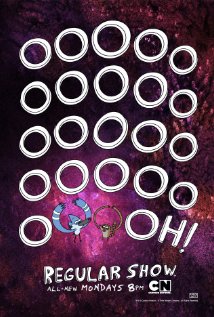


Many of Regular Show's weird and wonderful characters were based on the show’s creator J. FINDING SOPHIE.Winner of the 2012 Primetime Emmy for Outstanding Short-Format Animated Program, Regular Show has gone from strength to strength, and garnered a host of nominations including BAFTA Kids' Vote for Television, proving that the Regular Show doesn’t live up to its moniker. ESCAPE TO THE FOREST: BASED ON A TRUE STORY OF THE HOLOCAUST. I HAVE LIVED A THOUSAND YEARS: GROWING UP IN THE HOLOCAUST. Other books for young people about The Holocaust. Publishers Weekly : "votes this memorable novel to the extraordinary true story of an orphaned Jewish boy's experiences in Poland during the war." Horn Book had this to say about the book, “Part of the strength of Orlev's writing rests with its spareness.in this novel of heartbreaking resilience."īulletin of the Center for Children says, "This is one of the better examples of Holocaust fiction in depicting the vagaries of human nature as villainous and heroic acts emerge unexpectedly, even casually, from a shifting wartime population threatened with catastrophe." Orlev masterfully retells Jurek Staniank’s amazing story, and allows the reader insight into the world of the Holocaust from a young child’s perspective. The setting is authentic, as depicted through the eyes of someone who has crawled on his belly through the forest floors, slept in the protection of tall trees, and etched enough food from berry bushes and birds killed by slingshot, all to escape capture. The story takes us across rivers and deep into the woods. The setting of the story begins in the Warsaw ghetto and weaves itself through out the Polish countryside. The universality of animal companionship makes Jurek all the more real and identifiable. Only later the dog protects Jurek from a rabid dog in the forest and has to be shot by a group of foresters. At one time in the story, Jurek acquires a dog that becomes his only trusted friend. The reader can at once identify with young Jurek, as his struggle is relived with every turn of the page. The characters of the story are real and universal. Terms such as ration tickets, Gestapo, marks and pfennigs, and partisans are all part of the experience of young Jurek, and are woven into the text with out the need of foot-notes or a glossary.

The names are authentic, because they are the names of real people. The language in the story offers cultural markers tied to the Jewish culture and also to the time period of the Holocaust. The book was originally published in Hebrew, and has been translated into English by Hillel Halkin. The accurate depiction of the Holocaust is told as only survivors could, purely honest and unabated, with no sensationalism.Ĭultural markers can be found through out the story, including the language, characters, and setting. What makes Run, Boy, Run such a poignant experience for the reader is seeing the experience through the eyes of an eight-year old boy who loses his innocence and naivety somewhere in the Polish countryside as he escapes prejudice and the horrors of the Holocaust. This true story told by Uri Orlev, himself a Holocaust survivor, is authentic on all levels. Critical Analysis (Including Cultural Markers) Along the way he meets sympathizers who offer refuge, but also meets anti-Semitism.Ĭ. Separated from his family, Srulik Frydman, who later calls himself Jurek Staniak, must forage the Polish countryside seeking shelter, food, and safety. This is the true story of an eight-year old boy’s struggle for survival at the height of the Holocaust.


 0 kommentar(er)
0 kommentar(er)
